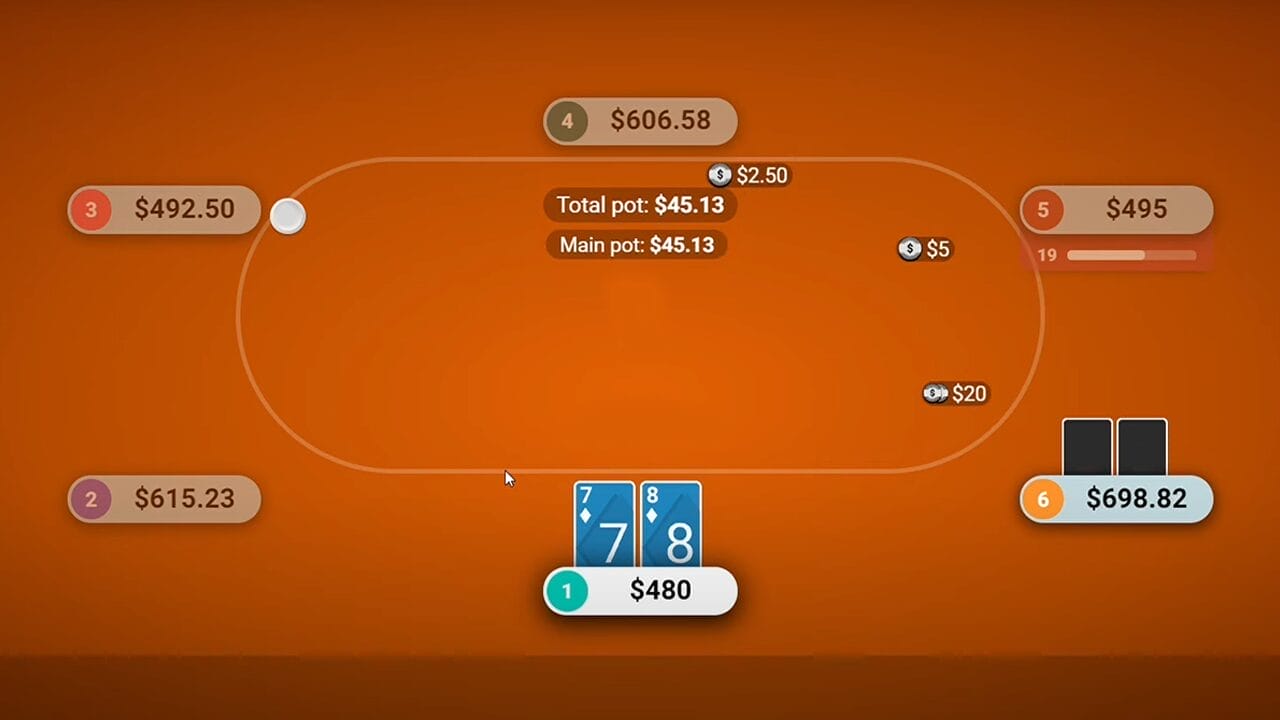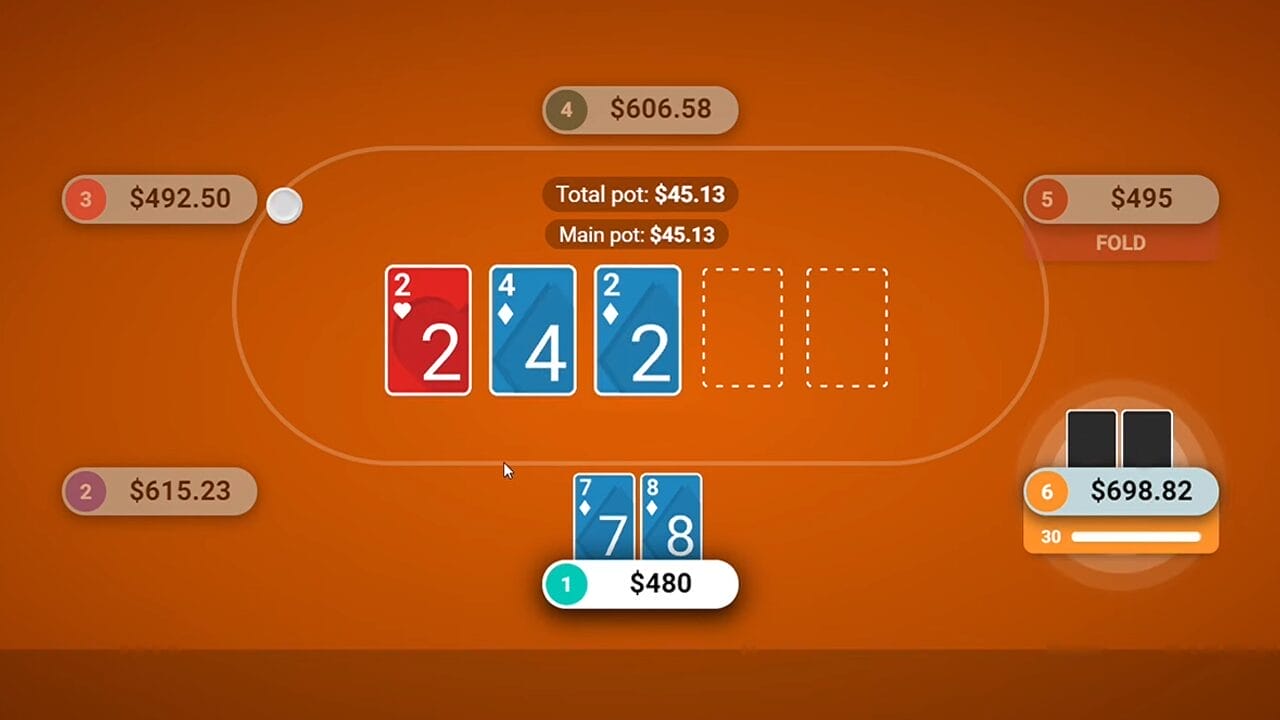Learning how to play suited connectors in poker is a skill that will serve you well over time. There are various strategies and approaches to winning a poker game, no matter how rigid the system is or the competence of the opponent you are against.
In the absence of one or a combination of various strategies, a player will possibly waste all his stakes unless extreme luck sets in, which isn’t reliable in poker. One of the concepts you must understand when playing poker is the Suited Connectors ideology.
Like every other strategy and poker arrangement, it requires a variety of expertise to successfully carry out its full potential. I’ve found that playing these types of hands can be very profitable against certain players sitting at your table.
A player must understand what it truly means, the different types and benefits attached to playing suited connectors, how to play them pre-flop and post-flop, maybe they should bluff with the poker arrangement, and several other pieces of knowledge attached to the concept.
All of this will be discussed in this article in an exclusive form, but first, what are suited connectors?
What Are Suited Connectors?
In simple terms, suited connectors are just a collection of pocket cards in poker with consecutive characters in addition to belonging to the same suit.
A hand containing a diamond queen and a jack is a suited connector. Same as Spades 4 and 3. Suited Connectors have varying strength and probabilities of making straight or straight draws than average non-connected hands.
This might not sound special, but suited connectors, when raised properly, cause some opposing players to fold, thereby reducing the pot odds.
They these, suited connectors are often used in conditions with fewer players and used as a surprise as they have the highest level of potential to form flushes and straights when they are later played with the community cards.
Different Types of Suited Connectors
Suited connectors are mainly classified based on their strengths and how they are used in gameplay. The differences aren’t much and can be easily maneuvered into another arrangement if needed.
- High Card Outs
These are suited connectors with higher probabilities of making straight than average connectors. They contain suited cards that are jack-high but without an ace card. This includes a jack and a queen, a king and a queen, and even a jack and a ten.
These sighted examples have a straight draw percentage of 22.12%, 17%, and 27.84% of hitting the possibility, no matter what your opponent has. This advantage comes from the ability of jack-high to include cards higher than it in rank.
- Low Straights
These are hands usually with an ace ready to make a high straight. The power of the ace card is utilized most times with the hands of an Ace, 2, 3 and a 4, an 8 and a 9, or any other suited connector’s combinations within a 9 and an Ace. Note that a low straight is in the form of an ace, a king, a jack, a 10, and a queen.
The mentioned hand is even greater than a king with a queen-suited connector alone. With these, you will observe that suited connectors can be combined with other forms of hand to increase your chances of winning. All you need to do is have at least two suitable connectors. Then, you are free to enable any other arrangement for the rest.
- Suited Gappers
Suited connectors might be hard sometimes to form, but there is a closer brother to explore—the suited gappers. This is a collection of suited cards, but they aren’t consecutive. Gappers aren’t suited connectors, but they are powerful enough over average unconnected hands.
You can have a diamond ace and a 3 or a spade 4 and 8. The number of spaces between the suited cards determines how they are called. For instance, if there is just one card between them, as in the case of a diamond Ace and a 3, it is a 1-gapper. A king and a 10 are two-gappers.
Benefits to Playing These Hands
- Versatility
Suited connectors have a good probability of turning into straights, straight flushes or flushes to form one of the best hands a poker player can wish for. Having a suited connector also allows players to combine it with any other strategic picking they can use.
- Unpredictability
Many players know of suited connectors and their advantages, but in real games, it is often out of their gameplay. Anyone who hands out suited connectors will be giving a surprise to players on the table, as it is one of the least expected arrangements.
Some players believe those who play them only did it out of pure luck and not original or intentional effort. Have suited connectors, and you can be sure other players are not anticipating it.
- Image Building
A well-rounded player is known by their acts, and having carefully arranged suited connectors on a table is not expected from a novice. The suited connectors demonstrate you understand the concepts of poker games, and as you engage in staking with it more, you have more control over other strategies.
- Positional advantage
Being on the button or cutoff seat is an advantage, but that is only if you have a hand worth winning. Before you fully commit your chips, you can always see how other players play and in cases where you assume you might be in trouble, getting suited connectors can be your savior from losing your chips.
How To Play Preflop
Suited connectors are powerful in the hands of those who can properly harness their potential. However, players have to understand that where it is mostly needed is in the post-flop to produce flushes and straights, but the correct form of handling and professionalism might be a gateway to a mind-blowing pre-flop. How do we approach this?
1. Be Aware of your Position
Unless you are in a state of playing with loose players or in a smaller raise, it is advised not to bring up suited connectors if you are in an early position. Instead, consider folding more often and making use of other card hands’ strategies to take over the table.
But if you are in a late position towards being the button or the cutoff, you can dazzle on with a precise inclusion of suited connectors in your hand. As a player, you have to be aware of this condition when utilizing suited connectors in pre-flop.
2. Call or Raise
As mentioned, you need to study the table to identify when best to use suited connectors in a poker game. For calling or raising, it is advised that, with suited connectors, you raise when you observe that the other players are too loose and that they might come up with weaker hands.
Also, when in a multiple limper condition, you can raise to eliminate or isolate an opponent from the table leaders’ sheet. However, calling preflop-suited connectors allows you to see desirable flop texture easily. It is a strategy used in tight games with more experienced players.
3. Three Bet Bluffing
Suited connectors in 3-betting bluffs: for a favorable pre-flop, the stacks matter before you initiate your suited connectors. When playing against opponents with deep stacks above 60 big blinds, you can put pressure on the players’ wider opening ranges with suited connectors.
But you wouldn’t want to struggle with navigating with just a draw during your gameplay, so it is advised that you only proceed with suited connectors while playing against short stacks with extreme caution. The goal is to take the pot. Stay focused, and don’t be the one the others learn about the consequences of loose playing from.
How to Play Post Flop
Here is where the real deal about suited connectors comes in. In any poker game, the most crucial factor is the flop texture. How well you connect the draw, pair, or miss entirely can determine how well you will be able to build your pot and beat your opponents’ tendencies toward winning. Approach it this way:
1. Aggressive Players
Against aggressive players, be careful with suited connectors. Instead, be selective with your hands. Suited connectors are powerful, but they are not premium hands that win every time.
2. Shift Strategies
Shift strategies away from pre-flop strategies. There is a reason experienced players do not hang out with suited connectors in pre-flop. There is a need for surprise and ignorance of strategies in post-flop where suited connectors have more potential for winning the pot. Instead, observe the table and proceed with caution. Attack only with well-suited connectors.
3. Board Connectivity
Is the flop a dry flop or a wet flop? If dry, suited connectors might be the Messiah. In a wet flop, you understand that there are many high cards, and if you proceed with less ranked-suited connectors, you might encounter stronger hands from your opponent, which might cost you everything you staked.
Should You Raise or Limp?
There are no restrictions on how to play these hands. So as a player, you need to study the table before you decide on any strategy to use. Whether to raise or limp with suited connectors depends on quite a few. The straight answer is, YES, YOU CAN DO BOTH. Now, how do you differentiate when to raise or limp?
- Passive Players
When you observe some players limp frequently, it is best to trap them post-flop by limping with suited connectors. The moment they call your bets with weaker hands, you will strike them with the better-suited connectors and have more chances of winning the pot when you hit the draw.
- Deception
Limping can be used to keep a low profile while being tactically dangerous towards winning the bigger pot. All you have to do is limp a couple of times and intercept it with a raise at some points. This makes you unpredictable, and your gameplay would not be refuted by a stronger strategy.
- Control
When your opponents seem more interested in controlling the dynamics of the pot, it is essential to approach the gameplay with caution. Limping means you surrender the initiative to other players, and you allow them to control the pre-flop and post-flop sizes of the pot. If you are interested in joining them in controlling, perhaps you can raise with your suited connectors.
- Bluffing
A passive image through limping can make it difficult to bluff later in the hand. Be careful while limping with suited connectors.
All in all, the choice of whether to raise or limp depends on the session your playing.
Should You Bluff?
I would definitely mix in some bluffing with your suited connectors.
- Post-flop
Suited connectors have more potential to be the best hand on the table, and when you hit the right cards on the flop or turn, the bluffing becomes harder for the opponent to identify and gives the bluff more credibility.
- Semi Bluffing
Semi-bluffing If you are willing to call down a bet when you hit your draw with the hope that your opponents fold, then maybe suited connectors can be a good addition. With a well-timed approach and bluff, you can call the pot to an end and win it immediately or build your chances of winning the pot later.
In all you do under this section, be confident with your hands. A strong presentation makes your bluffing more acceptable and believable.
Should You Fold Suited Connectors?
These are conditions that warrant folding-suited connectors:
- Limited Information
Having little to no information about the hands of your opponents can be dangerous, especially if you are in an early position. To preserve your chips, you can fold your suited connectors before you commit again with stronger hands.
- Large pre-flop sizes
While dealing with a tight player with a large pre-flop raise, be ready to fold your suited connectors. A larger raise from your opponent tells you that they believe you have higher hands, and if your suited connectors are not strong enough, you might be on loose ground.
- All-in-shoves
Suited connectors are not advised to be played in conditions with a short stack. Preserve your chips by folding them with proper timing.
Should You 3 or 4 bet?
The drill here is simple. A 3-betting situation with a suited connector is a strong tactic because you can balance your pre-flop raising range with it, and you can exploit loose players by forcing them to call with dominated hands.
But for 4-betting situations, suited connectors are not advised. The risk vs. reward factor is imminent, the post-flop play-ability is difficult to navigate with suited connectors, and there are tight ranges.
Final Thoughts
I know this was a lot to digest, but playing with these types of hands has a lot of nuances. Every hand you’re going to play will inevitably be a different situation with your suited connectors.
But keep in mind that winning the pot is the main goal in every poker table game, and suited connectors are only a means to an end, not the means to an end. What makes a player better is the effectiveness of strategies only when required.
Predictability is dangerous to gameplay, and in a pool of experienced players, you can find yourself in trouble. However, the only thing that should be predictable about you is that you have something up your sleeves.
I hope you enjoyed this update. You can also try some great poker sites here.




